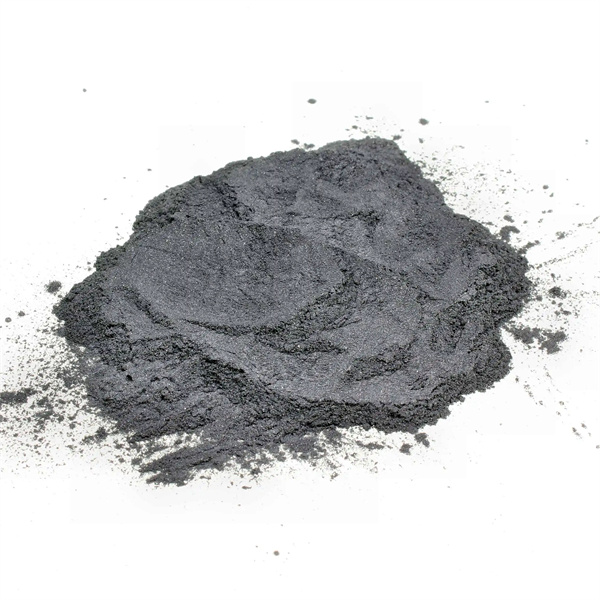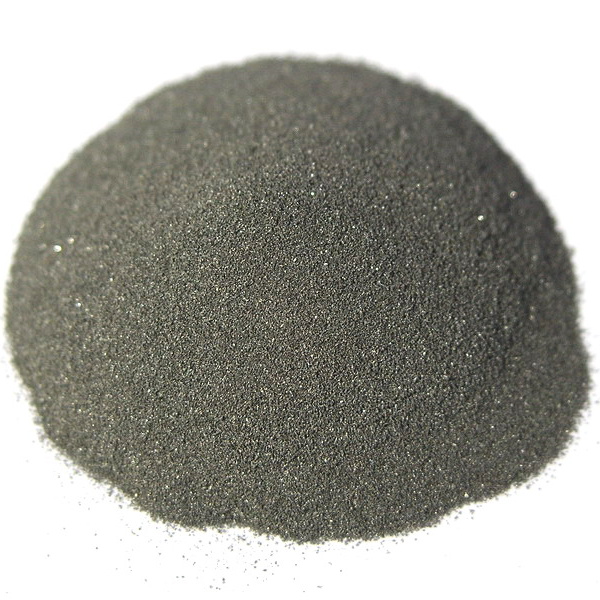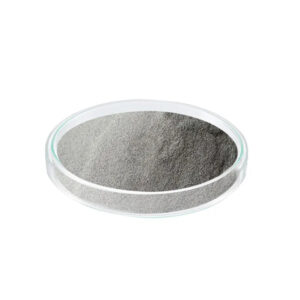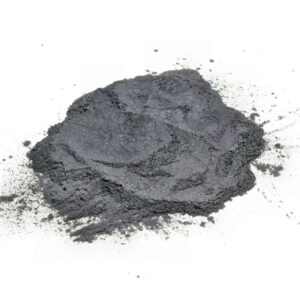내화성 금속 분말 다른 재료와 비교할 수 없는 초내열 합금의 적층 제조가 가능합니다. 이 가이드에서는 내화 분말 구성, 입자 사양, 특성 데이터, 가격 및 조달 결정을 위한 비교를 다룹니다.
내화성 금속 분말 소개
내화 분말이 제공하는 주요 기능은 다음과 같습니다:
- 극도로 높은 온도에 견딜 수 있습니다.
- 극한의 온도에서도 높은 강도 유지
- 크리프 변형 및 균열 방지
일반적으로 사용되는 합금은 다음과 같습니다:
- W-Ni-Cu와 같은 텅스텐 중합금
- 몰리브덴 TZM 합금
- 탄탈륨 분말
이 가이드는 내화성 분말을 선택할 때 고려해야 할 사항을 제공합니다:
- 합금 구성 및 생산 방법
- 기계적 특성 테스트 데이터
- 입자 크기 분포 권장 사항
- 형태, 밀도 및 흐름 특성
- 주문량을 기준으로 한 가격 견적
- 산화 및 내식성 비교
- 솔리드 폼에 대한 장단점
- 인쇄 매개변수 최적화에 대한 자주 묻는 질문

내화성 금속 분말 조성물
표 1 은 합금 종류에 따라 약간의 차이가 있는 주요 원소 첨가별 내화 금속 분말 조성을 보여줍니다:
| 합금 | 주요 합금 원소 |
|---|---|
| 텅스텐 중합금 | W, Ni, Cu, Fe |
| 몰리브덴 TZM | Mo, Ti, Zr |
| 탄탈륨 | Ta |
또한 탄소, 칼륨, 실리콘 및 붕소를 소량 첨가하면 작동 조건에 따라 고온 크리프 저항에 맞게 미세 구조와 입자 크기를 안정화할 수 있습니다.
기계적 특성 및 테스트 방법
표 2 은 내화성 금속 분말 합금이 충족하는 일반적인 최소 기계적 특성을 나타내며, 실제 값은 제작 형상, 후처리 및 열처리에 따라 달라질 수 있습니다:
| 합금 | 밀도 | **인장 강도 ** | 테스트 방법 |
|---|---|---|---|
| 텅스텐 중합금 | 18g/cc | 550 MPa | ASTM E8 |
| 몰리브덴 TZM | 10.2g/cc | 485 MPa | ASTM E8 |
| 탄탈륨 | 16.6g/cc | 207 MPa | ASTM E8 |
샘플링을 통해 납품된 파우더 로트 특성을 인증과 비교하여 신중하게 검증하여 일관성을 보장합니다.
내화성 금속 입자 크기 권장 사항
표 3 은 고품질 내화 분말에 사용되는 일반적인 입자 크기 분포를 보여줍니다:
| 크기 범위 | 일반 메시 | 일반적인 인쇄 범위 |
|---|---|---|
| 괜찮아요 | -325 메쉬 | 15-45 미크론 |
| 표준 | -100 메시 | 149 미크론 |
| 거친 | -60 +100 메시 | 250 미크론 |
기타 중요한 파우더 특성:
- 구형 입자 형태
- 30초 홀 퍼널 시간을 초과하는 우수한 유속
- 실제 밀도의 5% 이내의 겉보기 밀도
- 낮은 산소 및 수분 함량
입자 크기 선택 및 분배를 통해 높은 파우더 유동성과 인쇄 해상도 요구 사항의 균형을 맞출 수 있습니다.
파우더 형태, 밀도 및 흐름 특성
표 4 는 인쇄 공정 견고성에 영향을 미치는 일반적인 품질 수준 간의 파우더 특성을 비교합니다:
| 매개변수 | 고품질 파우더 | 엔트리 레벨 파우더 |
|---|---|---|
| 형태학 | 고도로 구형 | 들쭉날쭉하고 불규칙한 |
| 유량 | 홀 흐름 > 50g의 경우 35초 이상 | 50g의 경우 홀 흐름 <25초 |
| 겉보기 밀도 | > 90% 실제 밀도 | 종종 80% 미만의 실제 밀도 |
| 수분 함량 | <0.01% | >0.02% |
파우더 특성이 좋지 않으면 인쇄 품질을 얻기 위해 광범위한 매개변수 조정이 필요하므로 생산성이 저하됩니다.
내화 금속 분말 가격
표 5 는 일반적인 시장 상황에서의 대략적인 내화 분말 가격을 설명합니다:
| 주문량 | 가격 견적 |
|---|---|
| 10kg | $450+/kg |
| 100kg | $275+/kg |
| 500kg 이상 | $200+/kg |
| 1000+ kg | 서브키 할인 |
- 프리미엄 합금은 더 높은 기본 가격을 책정합니다.
- 500kg 이상 대량 주문 시 >40% 가격 인하 가능
- 상품 지수에 연동된 실제 시장 가격
- 공급업체의 실제 수율과 사용 가능한 비율을 신중하게 검증합니다.
산화 및 부식 방지 특성
내화성 금속 분말 는 산화 환경에서 매우 높은 융점과 안정성을 제공합니다:
표 6
| 합금 | 융점 | 산화 저항 |
|---|---|---|
| 텅스텐 중합금 | 1400°C | 우수 |
| 몰리브덴 TZM | 2600°C | 우수 |
| 탄탈륨 | 2996°C | 익스트림 |
크롬, 알루미늄, 실리콘 함량이 높아 녹는점에 가까운 극한의 온도에서도 재료 손실을 방지하는 끈질긴 산화물 장벽을 형성합니다.
장단점: 분말과 고체 형태
표 7
| 장점 | 단점 | |
|---|---|---|
| 내화성 금속 분말 | 복잡한 기하학 | 더 높은 비용 |
| 뛰어난 고온 강도 | 후처리 | |
| 무게 감소 | 파라미터 최적화 | |
| 내화성 금속 고체 | 비용 절감 | 모양 제한 |
| 가용성 | 매우 무겁다 | |
| 가공성 | 재료 낭비 |
일반적으로 내화 분말은 내열성이 중요한 소량 복합 부품의 경우 프리미엄을 정당화합니다. 표준 밀 제품 형태는 단순한 형상을 대량으로 생산할 때 경제성을 제공합니다.
공급 양식을 전략적으로 결합하면 전체 프로그램 비용을 절감할 수 있습니다.

자주 묻는 질문
표 8 - 자주 묻는 질문:
| 자주 묻는 질문 | 답변 |
|---|---|
| 테스트 보고서를 검토해야 하나요? | 예, 인증 데이터 검증은 분말 품질을 나타냅니다. |
| 어떤 크기의 파우더 입자를 사용해야 하나요? | 15-45미크론은 해상도와 흐름의 균형을 유지합니다. |
| 일관성에 영향을 미치는 요소는 무엇인가요? | 생산 방식이 가변성에 영향을 미침 - 진공 용융이 가장 좋음 |
| 처음에 얼마를 구매해야 하나요? | 소규모로 시작하여 프로세스가 검증되면 추가 구매 |
표 9 - 애플리케이션 중심의 조언:
| 자주 묻는 질문 | 답변 |
|---|---|
| 로켓 노즐 구성 요소를 최적화하려면 어떻게 해야 하나요? | 2mm 미만의 채널을 인쇄하려면 10미크론 미만의 초미세 W 또는 Mo 분말을 사용합니다. |
| 어떤 포스트 프로세싱 방식이 다공성을 낮출 수 있을까요? | 불활성 대기를 이용한 고온 등방성 프레스로 산화를 방지합니다. |
| 크리프 저항성을 극대화하는 내화합물은 무엇인가요? | 작동 온도에 따라 텅스텐 중합금에 칼륨, 실리콘 및 붕소 첨가를 고려합니다. |
| 초미세 피처 해상도를 위해 파라미터를 조정하려면 어떻게 해야 하나요? | 스캔 속도를 늦추고, 해치 간격을 늘리고, 기계가 허용하는 가장 얇은 레이어 두께를 사용합니다. |







